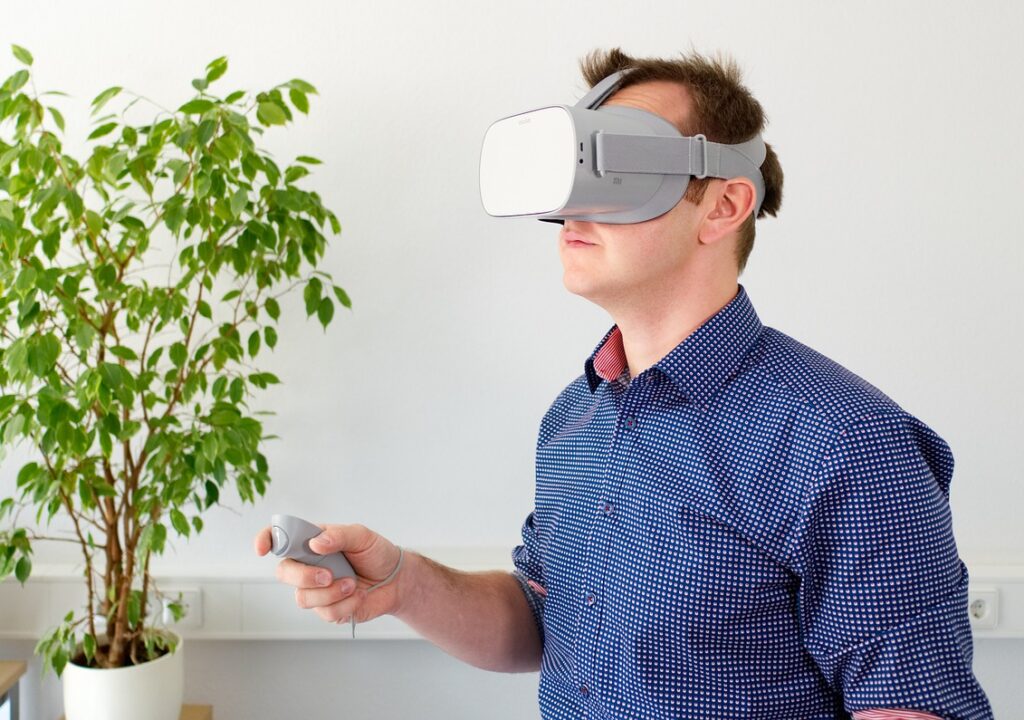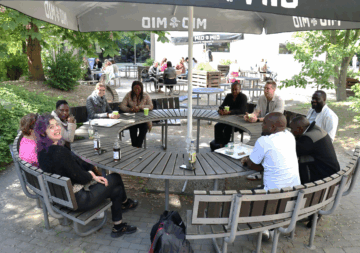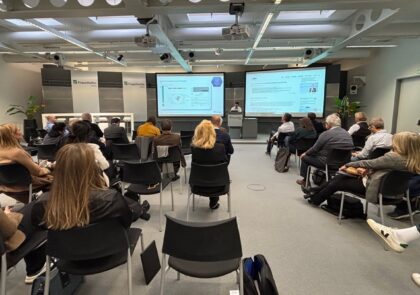
Currently, the digital and physical worlds are increasingly intertwined. The concept of “phygital”—a fusion of physical and digital elements—has emerged as a transformative force in enhancing customer experiences. This integration harnesses the analytical power of digital technology and the comforting tangibility of physical interactions. As businesses strive to optimise customer satisfaction and loyalty, understanding the role of caring in phygital experiences is essential and inspiring.
Author: Johanna Heinonen
Combining physical and digital to create experiences
Phygital experiences are distinguished by their ability to seamlessly blend the digital and physical with the human experience at heart. For example, retailers might employ interactive digital kiosks to provide detailed product information or streamline checkout processes, thus enhancing the shopping experience (Rajagopal 2022). In such environments, caring is not just a concept but a tangible effort to enhance users’ emotional, psychological, and physical needs. This encompasses a broad spectrum of practices, from delivering personalised digital content to fostering empathetic interactions in physical spaces.
Personalization is a key aspect of caring in phygital experiences. By utilising data analytics to tailor interactions based on individual preferences, companies demonstrate their commitment to understanding and valuing their customers’ uniqueness (Aithal 2023). This customized approach ensures that digital tools are accessible and user-friendly, catering to a wide range of customer needs and capabilities, and enhancing convenience and inclusivity (UN 2022).
The presence of caring within phygital experiences significantly impacts customer trust and loyalty. Research by Heinonen and Sthapit (2024) suggests that high levels of caring in brand interactions can elevate customer trust, boost retention rates, and stimulate word-of-mouth recommendations. However, delivering such experiences is not without its challenges, including concerns about data privacy and the technical complexities of seamlessly integrating digital and physical elements. Therefore, businesses must balance personalisation and ethical data practices, ensuring that ethical considerations are a priority in phygital experiences (Wong et al. 2023).
Phygital in customer service strategies
Integrating human elements into digital interactions can significantly elevate the perceived level of care. For instance, providing customer support through video calls or enabling real-time chats with service representatives helps bridge the gap between digital efficiency and personal interaction, offering warmth and responsiveness (Chandra et al. 2022).
Firms have adeptly integrated caring into their phygital strategies by employing advanced technological solutions to enrich customer service. One notable approach is using mobile devices by store staff to provide immediate information and assistance. This strategy exemplifies a high level of care, enhancing both the digital and physical realms of customer interaction. The seamless connection between staff and technology ensures customers receive a responsive and personalised shopping experience, demonstrating a commitment to customer satisfaction and efficiency (Aithal 2023).
Another pioneering example involves using augmented reality (AR) within physical stores. This technology allows customers to interact with products immersively, such as visualising how certain items would look or fit without physical trial. This integration of AR into the physical shopping experience not only leverages digital innovation to enhance customer interaction but also adds an element of convenience and excitement to the conventional shopping process. Such applications of AR in retail settings underscore the potential of digital tools to transform traditional customer interactions into engaging, high-tech experiences (2022).
These examples illustrate how phygital strategies can significantly improve customer service. By merging digital capabilities with human-centred service, businesses can offer more tailored and engaging experiences that meet individual customer needs. The deployment of mobile devices for real-time interaction and the innovative use of AR in physical stores are just a few ways companies are transforming the landscape of retail customer service, making it more dynamic and responsive to the modern consumer’s demands.
Phygital LAB
At LAB University of Applied Sciences, integrating phygital experiences could transform the educational landscape. Embedding augmented reality (AR) into traditional classrooms allows students to engage with three-dimensional visualisations of complex subjects right from their desks. This makes learning more immersive and helps understand intricate concepts.
Data analytics can also help personalise learning experiences. Teachers can tailor instructional content to meet individual needs by tracking each student’s unique learning patterns. Real-time feedback and assistance through mobile technologies can also reform the classroom. At the same time, teachers can instantly assess student comprehension and adjust lessons to address learning gaps, ensuring a more effective teaching environment.
Moreover, virtual collaboration spaces could encourage teamwork beyond physical boundaries, allowing students to interact with peers globally through digital platforms that simulate an in-person group workspace. This can be especially beneficial for project-based learning and fostering global connections. Transforming some physical spaces into dynamic learning environments with interactive digital displays and adaptable settings can create a responsive educational atmosphere. Such environments would adjust lighting and displays to suit the educational content, enriching the learning experience.
References
Aithal, P. S. 2023. How to Create Business Value Through Technological Innovations Using ICCT Underlying Technologies. International Journal of Applied Engineering and Management Letters. 232–292. Cited 23.5.2024. Available at https://doi.org/10.47992/IJAEML.2581.7000.0184
Chandra, S., Shirish, A. & Srivastava, S. C. 2022. To Be or Not to Be …Human? Theorizing the Role of Human-Like Competencies in Conversational Artificial Intelligence Agents. Journal of Management Information Systems. 39(4). 969–1005. Cited 23.5.2024. Available at https://doi.org/10.1080/07421222.2022.2127441
Heinonen, J. & Sthapit, E. 2024. Service Agent Driven Co-Created Caring in Chat-Based Customer Service Encounters. Services Marketing Quarterly. 45(1). 1–24. Cited 23.5.2024. Available at https://doi.org/10.1080/15332969.2023.2288733.
Rajagopal, R. 2022. Impact of retailing technology during business shutdown. Marketing Intelligence & Planning. 40(4). 441–459. Cited 23.5.2024. Avalaible at https://doi.org/10.1108/MIP-08-2021-0255
Wong, Y. N., Jones, R., Das, R. & Jackson, P. 2023. Conditional trust: Citizens’ council on data-driven media personalisation and public expectations of transparency and accountability. Big Data & Society. 10(2). Cited 23.5.2024. Available at https://doi.org/10.1177/20539517231184892
UN ESCAP. 2022. Inclusive digital development. Cited 23.5.2024. Available at https://repository.unescap.org/handle/20.500.12870/5307
Author
Johanna Heinonen is a Senior Lecturer at LAB University of Applied Sciences. She is particularly passionate about studying how digital tools and applications could be used more efficiently. She defends her PhD about co-creational elements of caring in chat-based customer service encounters in September 2024.
Illustration: https://pixabay.com/fi/photos/vr-virtuaalitodellisuus-lasit-3411378/(Pixabay Licence)
Published 29.5.2024
Reference to this article
Heinonen, J. 2024. The Meaning of Caring in Phygital Experiences. LAB Pro. Cited and the date of citation. Available at https://www.labopen.fi/lab-pro/the-meaning-of-caring-in-phygital-experiences/






